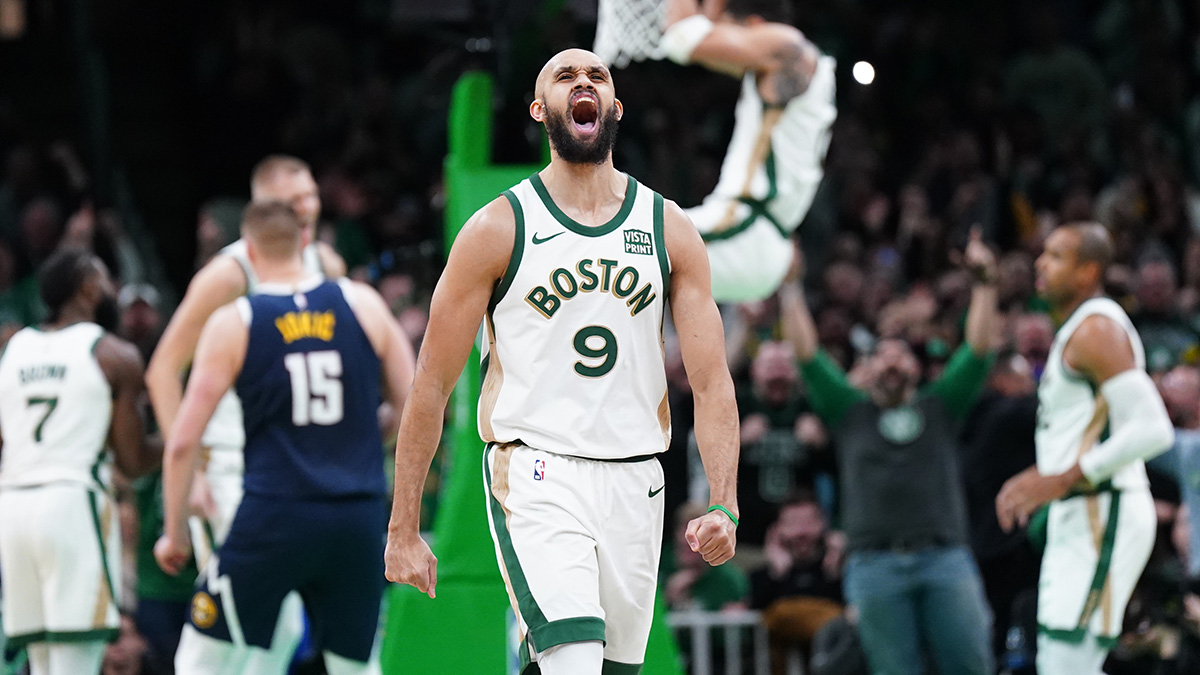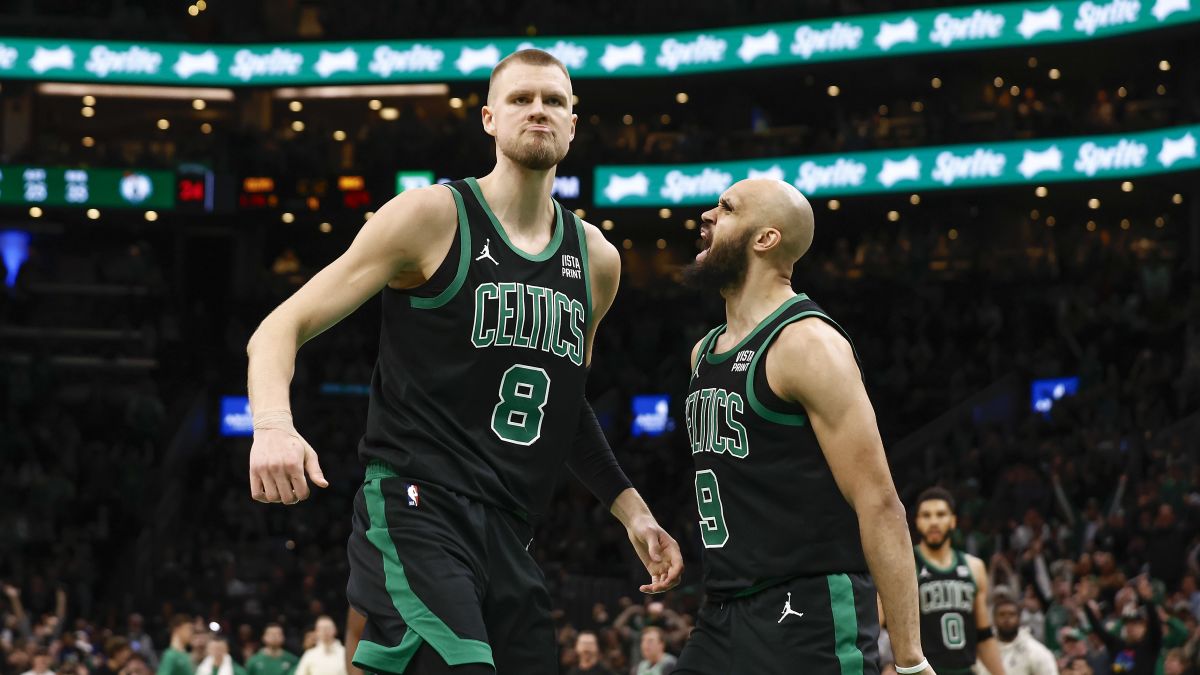A couple days after the Boston Celtics’ maddening 2018-19 season ended, our NBC Sports Boston crew gathered at the Auerbach Center to tape the final Celtics Post Up show of the season. The Celtics had already completed exit interviews, this after being unceremoniously ousted from the second round of the playoffs by the Milwaukee Bucks, and players had begun scattering in advance of a very uncertain offseason.
The facility appeared to be a ghost town, which made the sound of a single bouncing ball all the more curious. Craning for a glimpse through a floor-level window, we could see a sweat-covered Jaylen Brown going through a workout with assistant coach Tony Dobbins.
It was that workout that planted the seeds for Brown’s leap during the 2019-20 season. One year after being stuffed in a corner and forced to subsist on the occasional 3-point look that came his way, Brown pledged to showcase all the areas of his game that had gone dormant during a frustration-filled 2018-19 campaign.
Stay in the game with the latest updates on your beloved Boston sports teams! Sign up here for our All Access Daily newsletter.
True to his promise, Brown asserted himself as an All-Star in-the-making this past season while displaying a far more complete player than we had seen to that point. During the postseason, he might have been Boston’s most consistent presence.
Forsberg: Power Ranking the Eastern Conference in 2021
Brown's base stat line alone shows his progress — 20.3 points, 6.4 rebounds, 2.1 assists and 1.1 steals with 48.1/38.2/72.4 shooting splits on field goals, 3-pointers, and free throws. But it wasn’t just the spike in base production — an extra 8 minutes per game and a larger role would help boost most players' base numbers — but the advanced metrics really hammered home Brown’s progress.
His rebound and assists rates both spiked, his turnover percentage went south of his career average despite an uptick in his usage rate. Brown’s true shooting percentage was by far the best of his career.
Boston Celtics
In any other season, Brown’s breakout would have been the biggest headline, especially for a team that surged to the conference finals. Alas, Jayson Tatum’s vault to All-Star and then All-NBA forced Brown to share the spotlight.
For the Celtics, it’s an embarrassment of riches. Two players 23 or younger asserting themselves as the All-Star core of this franchise deep into the future.
The question posed as the premise of this article was: What does Jaylen Brown need to add to his game to become the All-Star we think he’s capable of becoming? Our quick answer was that he probably didn't need to add anything, he just has to keep being Jaylen Brown.
Which means he absolutely won’t be content with the status quo.
But if we were going to nitpick, we’d like to see Brown take advantage of post-up opportunities more often. The Celtics often deployed him as an undersized defender at the 4, but a lot of teams put smaller guards or wings on him at the other end. During the regular season, Brown ranked in the 93rd percentile among all NBA players while averaging 1.12 points per post up, per Synergy data. This while shooting 62.9 percent (22 of 35) during the 49 possessions he finished in post-up situations.
NBA Mock Draft 8.0: Celtics add needed size, scoring
We’d like to see Brown get to the free throw line more often. Post-up situations could help that. But the improved handle he displayed this year also allowed him to more confidently attack the basket and yet his free-throw attempt rate was lower (.274) than his first two seasons in the league (.292). He must balance those 3-point attempts attempts with attacking, especially when Boston’s offense is stagnant.
Brown could benefit, too, from more opportunities in the pick-and-roll. The Celtics don’t utilize that look often, with Synergy data suggesting he finished just 29 possessions in the pick-and-roll this postseason. Still, Brown averaged a robust 1.14 points per play while shooting 52.4 percent (11 for 21) in that play type -- and he drew a shooting foul a team-best 17.2 percent of the time.
Defensively, Brown was excellent in the postseason. Consider Brown’s work against his top defensive assignments, per the NBA’s matchup data:
Brown bounced rather seamlessly from hand-to-hand combat with Siakam or Horford near the basket, to chasing Robinson or Herro around the 3-point line. He wasn’t perfect, and the biggest complaint about Brown’s defense is that he sometimes loses track of shooters just long enough for them to hit a big shot. He can absolutely improve on that but his versatility is huge for a Boston team that loves to play small.
In a souped-up Eastern Conference, it’s not a slam dunk that Brown will be an All-Star next season. But his seemingly insatiable desire to improve will position him for consideration.
A year ago, a lot of people put a ceiling on his potential and then scoffed at the amount Boston paid to extend his rookie deal. A year later, it seems best to avoid putting limitations on Brown — and his deal could end up being a bargain based on his potential production.


